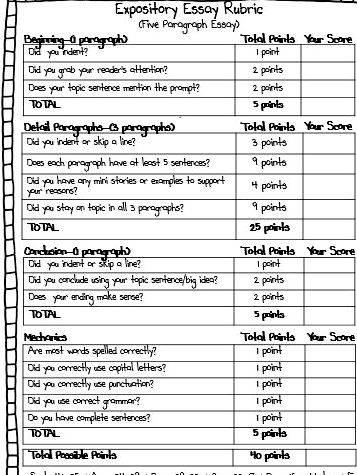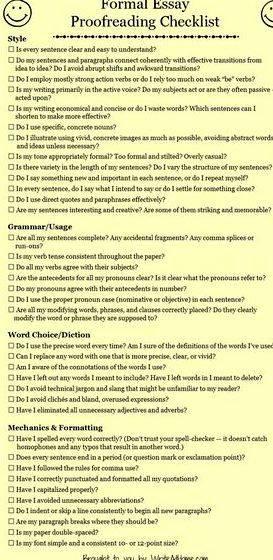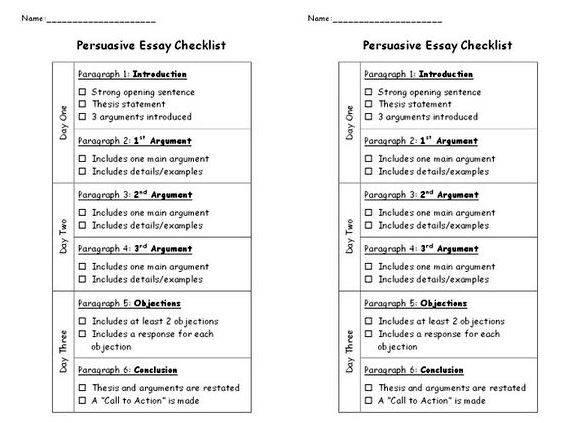

Grading criteria can be very simple or complex. They can analyze discrete elements of performance or describe general traits that define papers in a given grade range. You can use them to set up a scoring sheet for grading final drafts, and to create revision-oriented checklists to speed up commenting on early drafts of projects. By far the best way to clarify grading criteria is to look at one or more sample pieces of writing, asking students to apply the criteria, and discussing their judgments as a class.
Analytical approaches to grading
Analytical rubrics assign a specific point value to each attribute of a project (for example: thesis, evidence, logic, discussion, development, grammar, spelling, and formatting). They may be arranged graphically as grids, sliding scales, or checklists. You can weight categories to reflect issues of more or less concern, such as stressing the quality of a student’s thesis more than spelling skills. Analytical grade scales allow very detailed assessment of multi-faceted projects, but the more detailed they are, the longer they take to develop, fine-tune, and use. They also are more likely to elicit &”bean-counting&” responses from students, who want to know why they &”lost&” five points for comma splices when a fellow student was only penalized three points for spelling errors. Some instructors and students dislike what can feel like a lack of flexibility in analytical assessment.
Holistic approaches to grading
Holistic grading rubrics typically focus on larger skill sets demonstrated in the writing. They can be as detailed or as general as you like. Ideally, the descriptions will use specific language, but not overload students with information.

Assigning holistic grades often speeds up the grading process, and many instructors feel holistic grades best reflect the inseparability of mechanics and ideas. But without good performance level descriptions, holistic grades can frustrate students, because they don’t convey a lot of information.

Creating your own criteria
Analytical and holistic elements can be combined in a single set of grading criteria. Use the arrangement that best fits the way you think as you are grading, and makes the most sense in terms of the particular assignment you are creating.
Also, when writing the criteria, use language that reflects your strengths and the way you grade. If you don’t have an encyclopedic knowledge of grammar errors, judge a paper’s &”coherence and readability&” rather than &”number of sentence boundary errors.&”
Here we have collected samples of grading criteria, checklists, and rubrics developed by writing instructors in different fields. We will be adding to this list fairly regularly, but of there is a specific type of rubric you would like to see that we have not yet added, please contact our office.
Rough Draft Revision Checklist
This checklist for providing comments on students’ early drafts of writing projects was designed for a causal analysis paper in a freshman-level composition course. It analyzes the draft across four performance areas: Claim or thesis, logic and reasoning, support and development, and organization and mechanics.

The weaknesses most commonly seen in causal draft papers are described, with additional space left for comments in each section (the additional spaces are ideal for noting a draft’s strengths).
Holistic Grading Criteria
These criteria were developed by Dr. David Barndollar for a sophomore-level English course. Here, the descriptions are grouped by grade performance level (A, B, C, D, and F) with the same five concerns addressed at each level: quality of ideas, development and organization, language and word choice, mechanics, and style.
Analytical Grading Outline
This grade sheet is adapted from one devised by Dr. Ruth Franks for a long research paper in her Biology 325L class. This highly-detailed rubric apportions 300 points for various performance categories. Dr. Franks was the winner of the 2003-3004 SWC Award for Writing Instruction.
Scaled Analytical Rubric
This very simple grade sheet was used by Dr. Susan Schorn for giving final grades on short papers in a rhetoric class. General performance descriptors are scaled to the point range for each criterion. The criteria on this grade sheet are not described here, but they map to more extensive criteria students received in the course syllabus and paper assignment. Note that space is left under each criterion for instructor comments.
Grading Grid
Dr. Joanna Migrock devised a criteria grid or table for assessing all assignments in a first-year composition class. Five performance areas are delineated: Purpose, Content, Audience, Organization, and Mechanics. Four performance levels are then described for each area. This grid could be used as is to give revision-oriented feedback on drafts; with the addition of grade weightings at each performance level, it could also be used to grade final drafts.
Previous answers to this question
This is a preview of an assignment submitted on our website by a student. If you need help with this question or any assignment help, click on the order button below and get started. We guarantee authentic, quality, 100% plagiarism free work or your money back.
 Get The Answer
Get The Answer